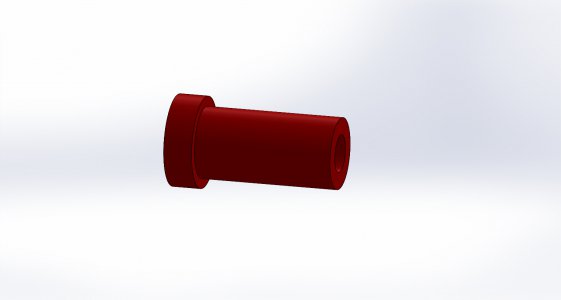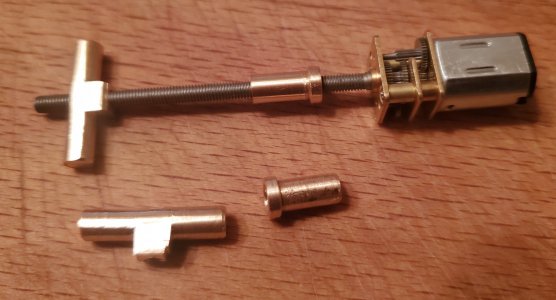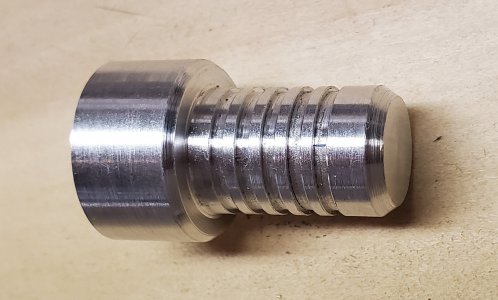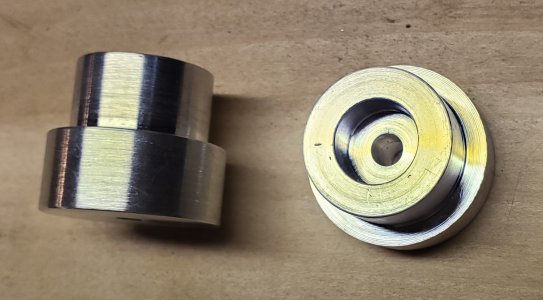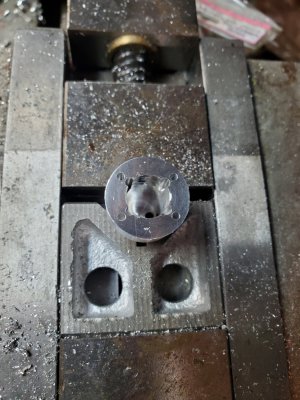First part done. The Drive pin.
It even threads onto the M3 motor shaft just fine. The bushings fit the ends perfectly, they move freely and have zero perceptible slop.
The setup on the rotary table was not difficult but did take same time.
First mount the rotary table then indicate it in to the machine.
Then set the 5C closer on the RT and have to tap it in until it is on the same center as the RT. This was the time consuming PITA part. I even tried the chuck up a dowel pin in the closer, then put the closer into the chuck on the mill to align it to the spindle but that was off about .003 every time I tried.
3 hours to set up and machine the first part, 5 minutes to machine the second part.
The Drilling and tapping was very simple (so no pics). Just used a single parallel to hold it with the square tab just above the vice jaws, indicate center spot, drill, c'bore the big end, and tap thru. Rinse and repeat. Time for both parts about 15 minutes total including setup and tear down.
Rotary table with finished part still in it.
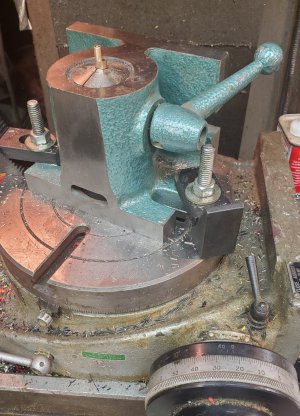
The 2 finished parts one threaded onto the motor shaft.
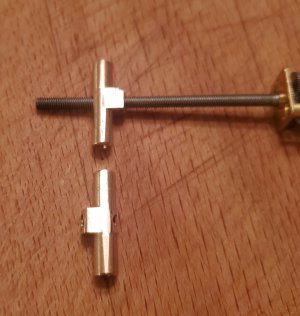
Now I think I will do the easiest part. The collar to adapt the M3 motor shaft to the ball bearing that will be in the end of the motor housing.
No progress pics since it is just turn to size with a small shoulder, Spot, drill, tap M3 and cutoff. This will be out of the same bronze as the drive pin.
